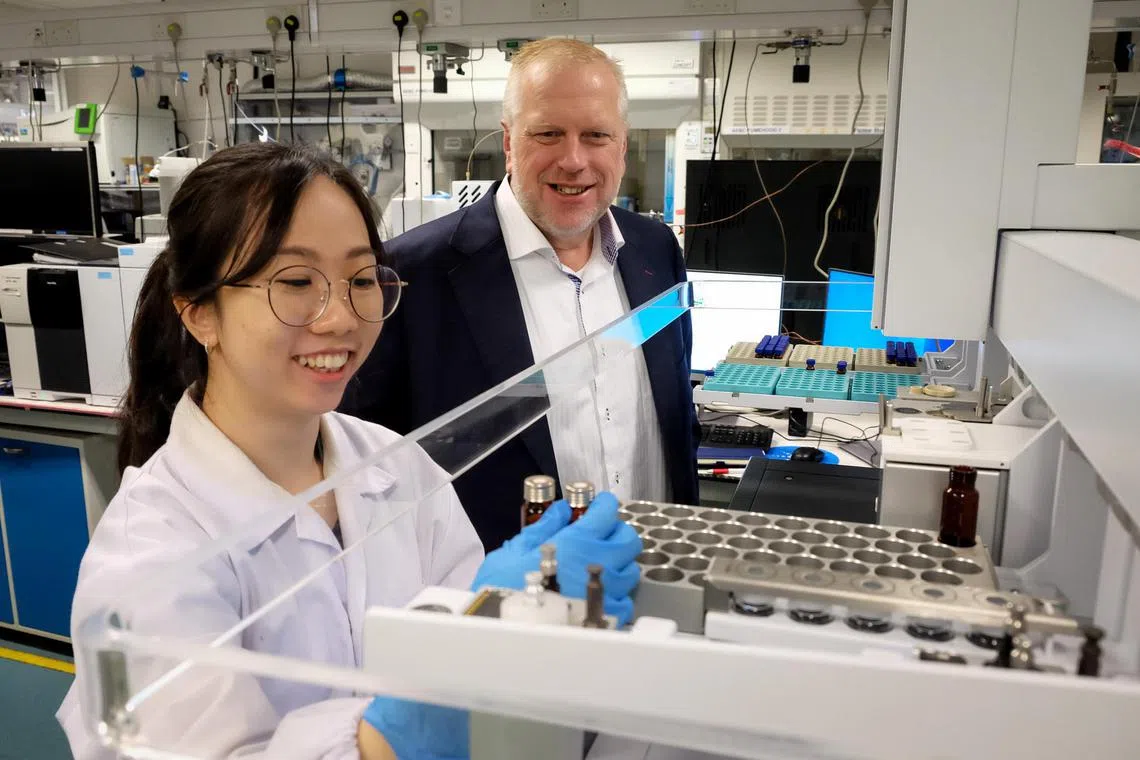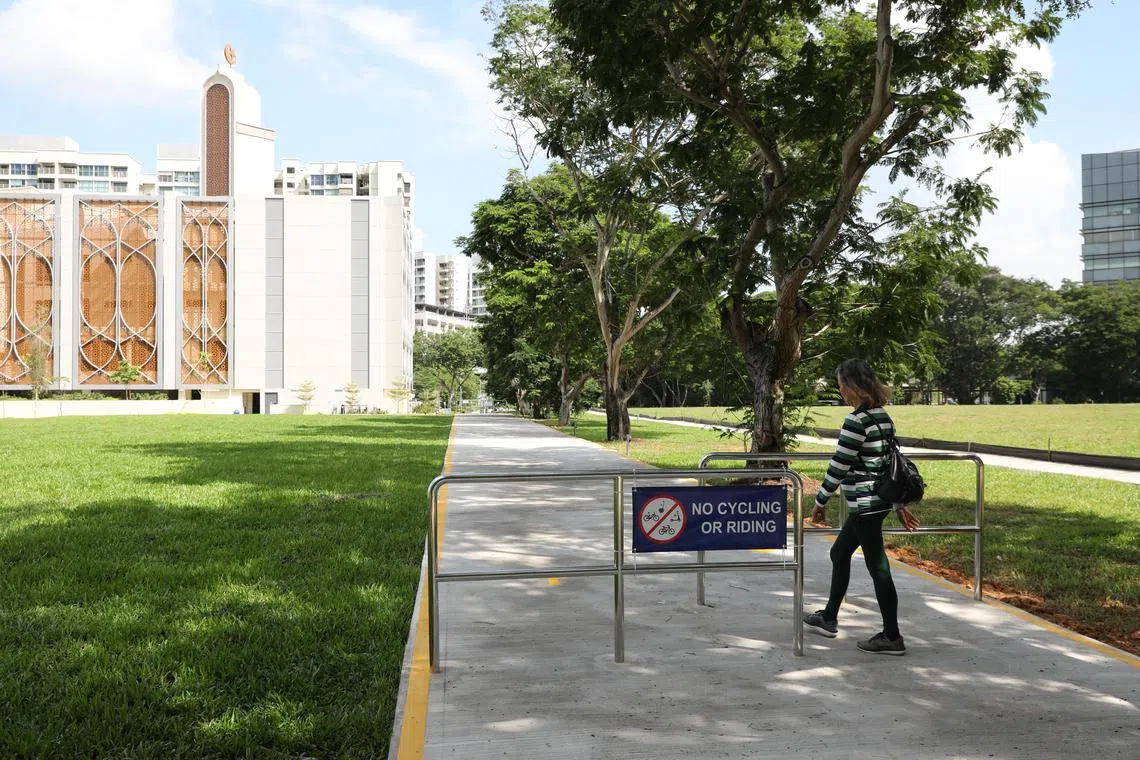Water testing with lab-grown human cells among projects at NTU supported by $92m research fund boost
Sign up now: Get ST's newsletters delivered to your inbox

NTU alumna Yuen Jia Wei and Professor Shane Snyder, director of Newri, with the equipment used in screening for toxicity in water and new chemical compounds.
PHOTO: NTU
Follow topic:
SINGAPORE - Scientists will soon be able to detect the presence of new chemical compounds in drinking water – using a novel testing method that involves lab-grown human cells.
This new tech could be added to national water agency PUB’s testing arsenal and act as an early warning system for potential hazards in treated water, which includes both drinking water and treated used water for industrial use.
Often, water contains a wide range of contaminants and chemical compounds, and testing each one requires significant time and resources, said Professor Shane Snyder, director of the Nanyang Technological University’s (NTU) Nanyang Environment and Water Research Institute (Newri).
Studying how these different compounds interact with human cells, such as lung and liver cells, can help scientists identify the ones that could be toxic to humans.
Aside from detecting new compounds, the testing method could potentially allow the agency to identify and narrow down selected chemical compounds in water for further testing, just by observing the effects of the water samples on lab-grown human cells, said PUB.
Its spokesman added that it already conducts some 500,000 water quality tests annually using more than 300 parameters.
This surpasses the 100 or so parameters specified by the World Health Organisation and regulated under the Environmental Public Health Act in Singapore.
The initiative is among a number of water research projects that will be supported by a fresh $92 million funding boost from organisations, such as the National Research Foundation, for Newri to continue its water and environmental research and innovation.
The additional tranche of funding will also create another $23 million in industry funding, bringing the total amount to $115 million in water research by 2026, said NTU.
The new testing standard could also replace animal testing – a gold standard in many countries such as the United States – and is more efficient, taking only 48 hours, compared with a matter of weeks when it comes to animal testing, said Prof Snyder.
The US Environmental Protection Agency announced in 2019 the elimination of all animal testing by 2035.
PUB said it does not conduct animal testing for water safety.
In addition, animals such as mice and rats, which are frequently used in such tests, do not represent the human body very well, said Prof Snyder.
“It’s not as good as people think. There are all kinds of flaws... for example, the protein in their bodies is different (from humans),” he added.
The new funding will also support other research projects, such as developing key technology that can enable Singapore to reduce its energy usage and carbon footprint in water treatment and desalination.
PUB aims to cut its energy usage for desalination, which currently consumes 3.5 kilowatt-hour per cubic m of energy, to less than 2 kilowatt-hour per cubic m by 2025.
One way of doing so would be to improve the type of water membranes used, which can help to improve water filtration efficiency. Desalinated water is produced via reverse osmosis, which involves pushing seawater through membranes to remove dissolved salts and minerals.
Wastewater, on the other hand, is recycled, disinfected and then treated to become Newater, which is used in water-intensive industries such as the semiconductor and biomedical sectors.
Some of the sludge that is left behind from the treatment process can be converted into biogas for electricity generation.
The residual sludge is incinerated and sent to Semakau Landfill, which is expected to run out of space by 2035.
Therefore, a research team from Newri is looking to reduce the amount of sludge produced, and to recover more usable resources from the waste.
One way would be to improve the yield of biogas. Another way is to turn the incineration ash from sludge into what is called Newsand, a crystal-like substance resembling sand.
Tests showed that metals do not leach from Newsand, said Prof Snyder.
Newsand, which is made from repurposed solid waste, can be used in construction. It has been used to construct a footpath at Our Tampines Hub and a 3D-printed concrete bench.

Newsand has been used to construct a footpath (above) at Our Tampines Hub.
ST PHOTO: ONG WEE JIN
Newri has secured $683 million in funding since it was founded in 2007, said NTU.
“The institute has grown to become one of the world’s top research organisations in water and environment, thanks to its impressive research output and industry partnerships,“ it added.
The institute has generated a total of 180 pieces of intellectual property, such as patents, through its research. Newri has also collaborated with 120 companies, including automotive manufacturer Hyundai, energy company Sembcorp and urban planning firm Surbana Jurong.
A total of 259 postgraduate students have graduated from Newri since 2007, many of whom are now working for water and environmental companies as well as government agencies like PUB, said NTU.
Newri is now training about 80 postgraduate students and expects to enrol another 60 more over the next four years.


